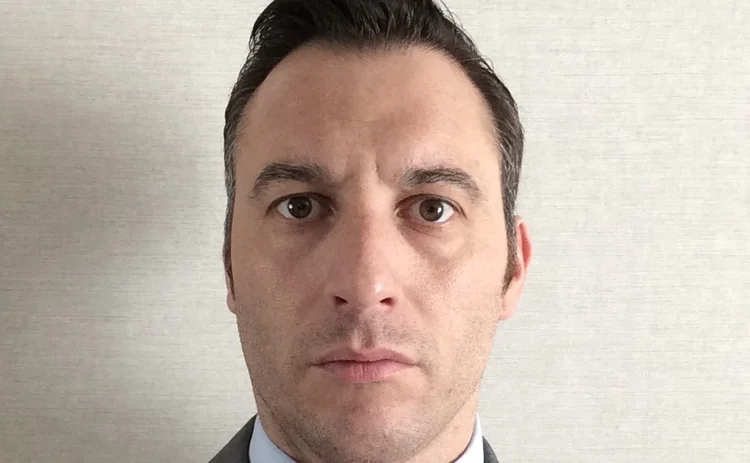Vendor Management: Taking The Road Less Traveled
NCB Capital technology chief Matthew Taylor argues for value in coordination.

Do you manage your vendors, or do your vendors manage you?
Can you truthfully answer the question, “Is vendor management truly important to you and your organization?"
This came up as I was speaking to a friend of mine a few weeks ago who is a senior executive at a well-known software vendor in London. After the usual pleasantries, we reverted back into our normal comfort conversation and traded stories of bad vendor-versus-client stories.
I took the first swipe: I explained how a recent vendor had tried to swap over one consultant working on an implementation for me for a dramatically less-experienced consultant, mid-project. When I called the vendor out on the subtle swap, he turned it around on how he was doing me a favor allowing my internal team to take on more responsibility and develop our own skills. The word to the wise is always be happy with your consultants' quality; you are paying for their expertise, and don’t be afraid to ask for their experience or even request to interview them.
Another example: I was contacted by one of our vendors requesting a number-of-years backdated pay for user licenses we didn't know we even had, and they could not prove we were using, as the vendor themselves forgot to update the system to restrict our usage. For this application, only the vendor had access to make the change, and they never did until that day when — surprise — the payment request arrived.
The relationship between vendor and clients is fraught with challenges. It is only too easy to assume that it is always the vendor's fault as it is for the vendor to blame the client. My friend had his own outrageous behavior from clients to highilght. As always, the truth lies somewhere in the middle.
Two Routes
I've read many job descriptions for financial IT roles, and you regularly read “MUST have vendor management experience” among them. I know nearly all vendors hire full-time staff as relationship managers; some even have strategic RMs, too. Therefore, vendor management must be important. There must be a skill to managing the relationships, but can we measure it, and how? Does it add value? I believe the answer to all these questions is, “Yes! But do you?"
So, how to define the art of vendor management? How does managing your vendor add value?
Take asset management and a hypothetical comparison: Institutions A and B have the same primary applications, which is not uncommon, and therefore have the same set of vendors to manage.
Institution A is fairly happy with the vendors and assigns an application-support person to manage the relationship; the vendor swings by once or twice a year, maybe they have a few drinks, explains their latest developments and any changes in the organization and strategy. The asset manager continues to pay the license and basically has the same setup year-on-year.
Institution B works with their vendors slightly differently. They have made a conscious decision to proactively manage their vendors. Not only that, but they put together a tangible matrix of KPI’s: how many defects got logged, how quick did the issues get resolved, were any SLAs breached, how many of our registered defects or enhancements did they complete, and staff turnover numbers, among other things.
This strategy has been agreed upon internally and is consistent across all of the firm's vendors so that they can benchmark their relationships, and the results are archived to keep a track record on their progress. Institution B informs the vendor when, and how often they would like to see them and the meeting includes management. The firm provides the agenda for the meeting, manages the meeting, and the results of the meeting and KPIs are shared with the vendor for open dialogue on where improvements can be made.
Hidden Impacts
Based on experience — both my own and my peers' — the likely impact on the above example, three to five years ahead, is significant.
Institution A will probably have the same issues as they always did: the same defects, a minimal amount of defects resolved, and most likely no enhancements.
Institution B has gone on to have all key defects resolved, and multiple enhancements year-on-year, which has reduced operational risk, increased efficiency and scalability, which has given them a competitive advantage over Institution A (despite having the same set of applications) and of course gets a bigger bang for their buck.
Another concrete illustration can be found in retirement administration. Your global administrator uses a state-of-the-art website to manage your investments and check your valuations; many of these will look and feel completely different. They must be run by different vendors — maybe, maybe not. Take the top five global retirement administrators, and the same vendor will come up more than once. Why are they so different?
Now ask yourself the question again: Is vendor management truly important?
The relationship between vendors and clients is fraught with challenges. It is only too easy to assume that it is always the vendor's fault, as it is for the vendor to blame the client. My friend had his own outrageous behavior from clients to highilght. As always, the truth lies somewhere in the middle.
Only users who have a paid subscription or are part of a corporate subscription are able to print or copy content.
To access these options, along with all other subscription benefits, please contact info@waterstechnology.com or view our subscription options here: https://subscriptions.waterstechnology.com/subscribe
You are currently unable to print this content. Please contact info@waterstechnology.com to find out more.
You are currently unable to copy this content. Please contact info@waterstechnology.com to find out more.
Copyright Infopro Digital Limited. All rights reserved.
As outlined in our terms and conditions, https://www.infopro-digital.com/terms-and-conditions/subscriptions/ (point 2.4), printing is limited to a single copy.
If you would like to purchase additional rights please email info@waterstechnology.com
Copyright Infopro Digital Limited. All rights reserved.
You may share this content using our article tools. As outlined in our terms and conditions, https://www.infopro-digital.com/terms-and-conditions/subscriptions/ (clause 2.4), an Authorised User may only make one copy of the materials for their own personal use. You must also comply with the restrictions in clause 2.5.
If you would like to purchase additional rights please email info@waterstechnology.com
More on Emerging Technologies
EY and Microsoft partner to bring agentic AI to risk management
The two firms are part of a deal to bring agentic AI processes to core operations like lending, servicing and risk, starting at Eurobank.
T. Rowe taps Genesis, Cusip lawsuit, FanDuel-CME tie-up, and more
The Waters Cooler: Tokenization and private markets, EuroCTP-BMLL, StateStreet-PriceStats, and more.
Tokenization & Private Markets: Where mixed data finds a needed partner?
Waters Wrap: Reading the tea leaves, Anthony predicts BlackRock’s Preqin deal, Securitize’s IPO, and numerous public comments from industry leaders are just the tip of the iceberg.
Fintech proposes borrowing AI standard from autonomous cars
Amid the rapidly growing use of financial AI, startup Martini.ai urges industry practitioners to coalesce around a common language to measure their progress and understand their own projects and capabilities.
Waters Wavelength Ep. 338: BBH’s Mike McGovern
This week, Mike McGovern of Brown Brothers Harriman talks with Tony about the importance of open architectures and the need for better data management in this increasingly AI-driven world.
LSEG and Nasdaq partner, MarketAxess’ new auctions, TXSE raises $250M, and more
The Waters Cooler: UBS executes its first tokenized fund transaction, LNRS opens APAC datacenter, MayStreet hits back in court, and more in this week’s news roundup.
Waters Wavelength Ep. 337: Interop.io’s Bob Myers
This week, Tony chats with Interop.io’s Bob Myers about agentic AI, the Model Context Protocol, and interoperability.
SS&C’s Bill Stone: RPA still important for agentic endeavors
The fintech is leaning on almost four decades in financial services and its many acquisitions to power AI deployment and meet the market’s needs.






